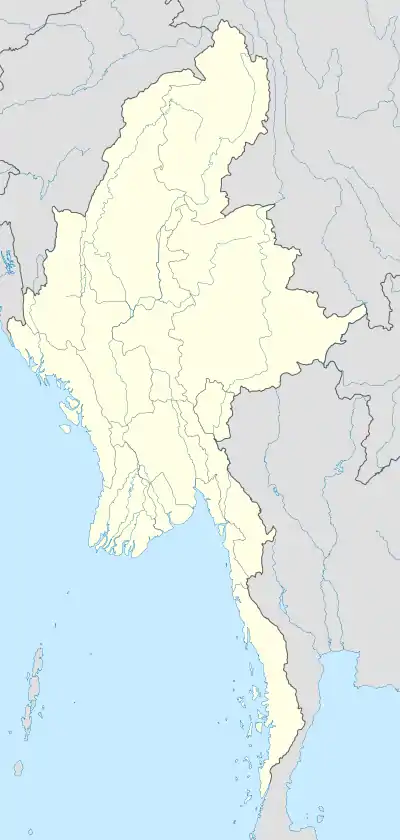| Fushan Temple Hok-san-sī 福山寺 | |
|---|---|
| Religion | |
| Affiliation | Mahayana Buddhism |
| Deity | Chó·-su-kong (Qingshui) |
| Location | |
| Location | Kaba Aye Pagoda Road, Bahan Township, Yangon |
| Country | Burma |
 Shown within Myanmar | |
| Geographic coordinates | 16°49′30.73″N 96°9′15.64″E / 16.8252028°N 96.1543444°E |
| Architecture | |
| Completed | January 1875 |
Fushan Temple (Chinese: 福山寺; pinyin: Fúshān Sì; Pe̍h-ōe-jī: Hok-san-sī; Burmese: ကုက္ကိုင်းဘုရားကျောင်း; also called Fu Shan Si or Fu Sun Si), located on Kaba Aye Pagoda Road in Bahan Township, Yangon, is a Chinese temple founded in January 1875 by overseas Chinese descended from Hoklo people of Anxi County, Fujian.[1][2] The temple is managed by Kheng Hock Keong in downtown Yangon. Fushansi is dedicated to a deified Chinese Buddhist monk known as Master Qingshui or Chó·-su-kong in Hokkien (Chinese: 祖師公, also known as Qingshui Zushi) and the temple was restored in 2008. Fu Shan Temple attracts many devotees especially during Chinese New Year and Master Qingshui's Birthday.
The temple-tender, Mr. Yang, who said that he took part in its renovation in 1960, has managed the temple for many years. The temple compound includes a restaurant and a basketball court. There is also a small artificial body of water in the center of the compound, right in front of the entrance to the temple. The compound has become more of a Chinese park rather than a center of worship. The surrounding area includes traditional Chinese sculptures and architectural designs. There are also circular Chinese balconies with their stone-made tables and stools. Beside one of the balconies, there are statues from the Chinese zodiac and miniature versions of a Chinese bridge and tower.
References
- ↑ Chen, Yi-Sein (1966). "The Chinese in Rangoon during the 18th and 19th Centuries". Essays Offered to G. H. Luce by His Colleagues and Friends in Honour of His Seventy-Fifth Birthday. Volume 1: Papers on Asian History, Religion, Languages, Literature, Music Folklore, and Anthropology. Artibus Asiae Publishers. 23: 107–111. JSTOR 1522640.
- ↑ "Fushan Si".